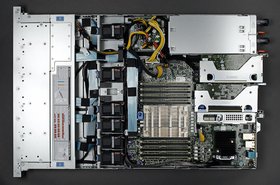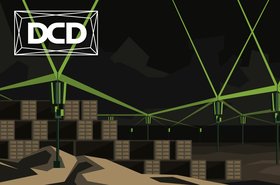Equinix has announced improvements to the Tinkerbell provisioning system it uses for its Equinix Metal bare-metal infrastructure as a service (IaaS) offering.
Equinix Metal, launched in October 2020, uses technology from Packet, which Equinix bought in January 2020. The enterprise colocation giant says that Tinkerbell already provisions thousands of servers per day for Equinix. It now has additional features, some of them with Peter-Pan-inspired names, and has joined the Sandbox program at the Cloud Neutral Computing Foundation (CNCF), the home of Kubernetes and other open source projects for containers and cloud infrastructure.
"Faith and trust and pixie dust"
"Today we announced that Tinkerbell has added a bunch of new features and gained momentum since joining the CNCF sandbox program," said Zac Smith. managing director of Equinix Metal. "This includes composable workflows via shared actions (leveraging the CNCF Artifact Hub), a technical preview of Cluster API for Tinkerbell, and out-of-the-box support for a wide variety of major operating systems.
"I always thought Tinkerbell was a great name for our internal PXE [Preboot Execution Environment] server, so it’s a sure sign of open source success that new components have been bestowed equally awesome names like Hook and Crocodile."
Tinkerbell is a collection of microservices that deploy bare metal servers, so physical hardware can be used as programmable digital infrastructure regardless of manufacturer, processor architecture, internal components, or networking environment, says the Equinix release: "With Tinkerbell, infrastructure operators and developers can normalize any heterogeneous hardware (including x86 and Arm); create powerful workflows to configure and secure private, hybrid or edge infrastructure; deploy their choice of operating system or virtualization software; and manage the life cycle of hardware programmatically."
The most important new component is Hook, an in-memory operating system installation environment developed within the community, based on Docker’s LinuxKit. Hook allows end-users to rebuild action images more quickly cutting build times from 45 minutes to 90 seconds. It also cuts memory footprint.
Tinkerbell also now has composable workflows, so users can share and reuse common workflow actions similarly to using container images on Docker Hub. Common Tinkerbell actions are now written in Go and delivered as binaries - and also make use of the new Hook functionality to cut provisioning times.
The provisioning system also now has an implementation of the popular Cluster API for implementing Kubernetes clusters, making Tinkerbell easier to use for old Kubernetes hands.
It should now run out-of-the-box on operating systems including VMware ESXi, RedHat Enterprise Linux, Windows Server, Flatcar Linux, Ubuntu, CentOS 8, Debian, and NixOS.
Tinkerbell has four major components: a DHCP/TFTP server (Boots), a metadata service (Hegel), an in-memory operating system installation environment (Hook), and a workflow engine (Tink). There is also an optional fifth component: a power and boot service (PBnJ) that communicates with the Baseboard Management Controllers (BMCs). Equinix open-sourced Tinkerbell in May 2020 after buying Packet, and submitted it to CNCF as A Sandbox project in November 2020.




